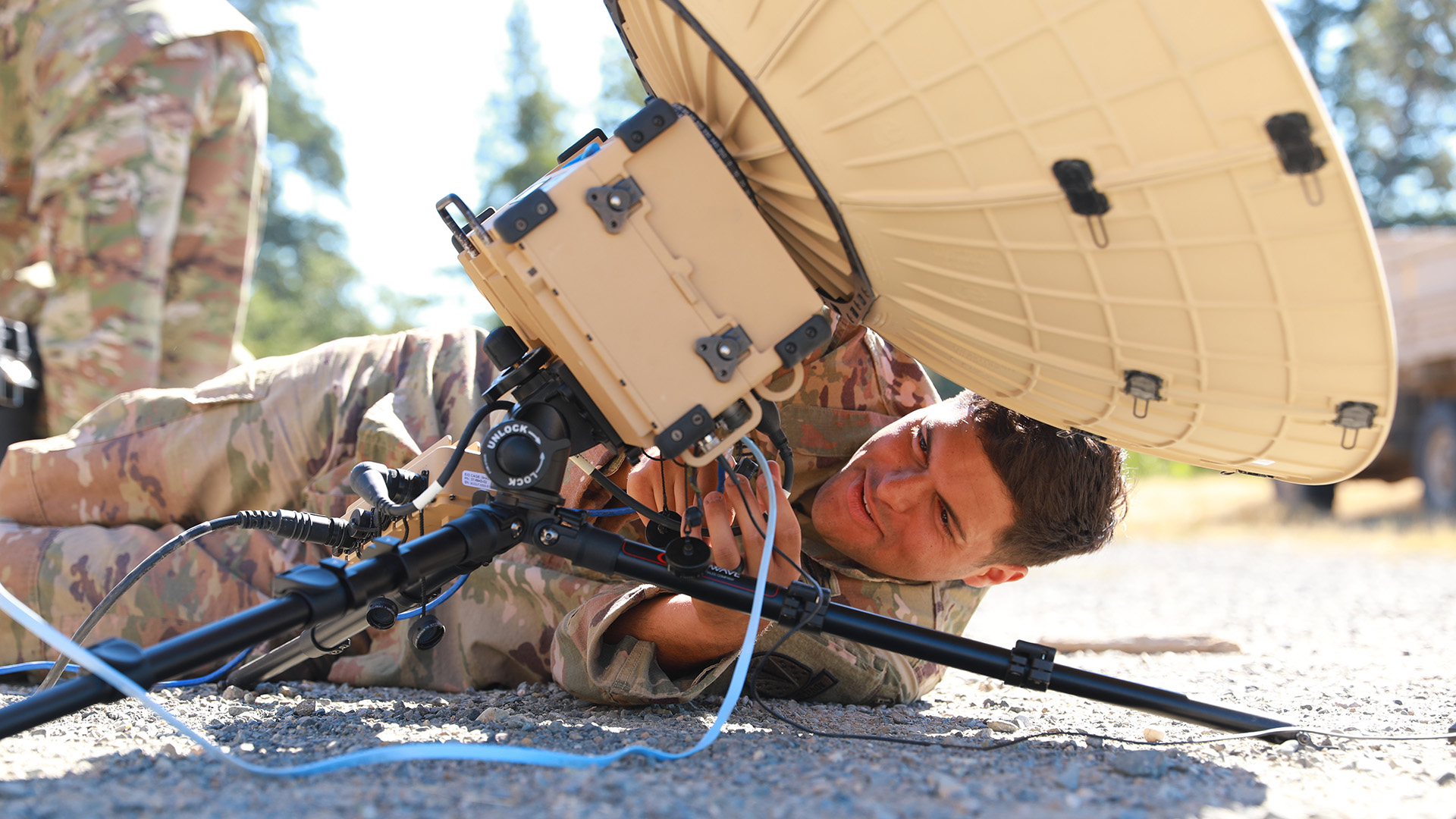

The 5th Security Force Assistance Brigade, or SFAB, is experimenting with Starshield, the military version of Starlink communications network made by SpaceX, said Col. Brandon Teague, commander of 5th SFAB.
“We’ve done some testing with it at home station, and all of our systems worked flawlessly over the backbones that it provides,” Teague told reporters on Monday.
SFABs are specialized units in which soldiers from the conventional forces train, advise, and assist foreign partners’ conventional military forces. Unlike Special Forces, soldiers in SFABs do not train foreign special operations forces, nor do they conduct unconventional warfare and other special operations missions.
The 5th SFAB is focused on the Indo-Pacific region and it has a persistent presence in the Philippines, Thailand, Mongolia, Malaysia, and Indonesia, Teague said during the Association of the United States Army’s annual conference in Washington, D.C.
Jane’s Defence Weekly first reported that the 5th SFAB would test Starshield.
Subscribe to Task & Purpose Today. Get the latest military news and culture in your inbox daily.
Starshield is a more secure version than Starlink, which is meant for civilian use.
The 5th SFAB is looking at whether it can use Starshield as a “redundant,” rather than a primary form of communication, Teague said.
“We have satellite communications that are organic to the SFAB already. But this just provides us another means, should we need it, again, to have that redundant level of communication.”
The 5th SFAB will experiment with four Starshield systems at the Joint Pacific Multinational Readiness Center in Hawaii at the end of October and then test them in the Indo-Pacific region, Teague said.
Like Starlink, Starshield uses low Earth orbit satellites to create a communications network. That could be useful if an adversary jams U.S. military communication systems that rely on satellites in different orbits, Teague said.
The Ukrainian military has heavily relied on Starlink, but Elon Musk, CEO of SpaceX, refused to let the Ukrainians use the network last year for a planned surprise attack on occupied Crimea.

Teague said he is not concerned that SpaceX might decide to turn off the 5th SFAB’s Starshield communications.
“It’s paid for service and they’re paid to provide that service as long as we’re under contract with them,” Teague said.
The Army currently has five active-duty SFABs and one National Guard unit. Army officials developed the SFAB concept during the Afghanistan War, and one of the first controversies involving the new unit was what color SFAB berets should be.
After a picture was posted online in 2017 showing a green beret that SFAB soldiers were supposedly intended to wear, the Army decided the following year to issue SFAB soldiers brown berets.
Since the 1st Security Force Assistance Brigade deployed to Afghanistan in March 2018, SFAB soldiers have deployed all over the world including to countries in Africa, Latin America, and the Indo-Pacific.
But SFABs have also received a lot of negative press this year. Army Col. Jonathan Chung was fired as commander of the 5th SFAB in June after being suspended earlier in the year over allegations that he was a toxic leader.
An internal Army investigation found that Chung’s replacement, Col. Tony Braxton, had violated temporary duty rules by keeping soldiers away from home for more than 180 days without extra pay, according to Military.com.
Braxton was eventually disciplined and reprimanded, said Sgt. 1st Class Adrian Patoka, a spokesman for Security Force Assistance Command.
Col. Meghann Sullivan, commander of the 5th Brigade Engineer Battalion, 5th SFAB, was also accused of misconduct, including forcefully kissing a subordinate, Military.com reported. The investigation into the allegations against Sullivan is ongoing, Patoka told Task & Purpose on Monday.
Despite the end of the war in Afghanistan, the need for SFABs has not gone away, Army officials said on Monday. In fact, combatant commands asked for SFAB assistance more than 500 times last year, but the Army could fill a fraction of those requests, Teague said.
“We will always have partners,” said Col. Brian Ducote, commander of the 1st SFAB, which is focused on Latin and South America. “We need to build strong partnerships and relationships in order to be effective as a fighting force. As long as that’s our approach as a nation, we will always have a need for the SFAB in conflict and in competition.”
The latest on Task & Purpose
- Opinion: In the name of health care freedom, millions of veterans may lose theirs
- Special Forces vs special operations forces — what’s the difference?
- Commandant wants all Marines to do a tour in the Indo-Pacific
- VA claims processors overwhelmed, quitting from high case load
- First photos of 101st Airborne soldiers testing the Army’s new rifles